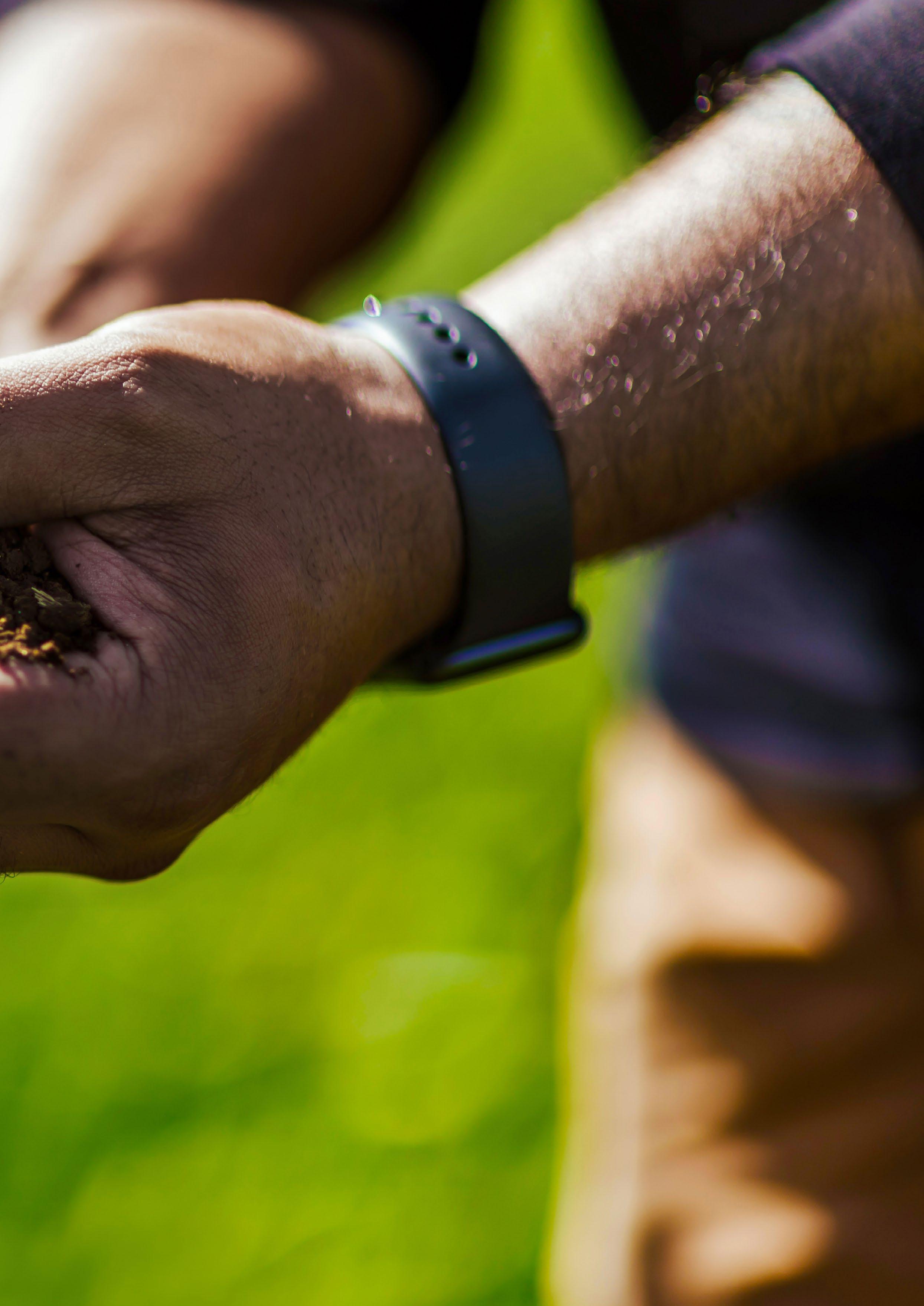











Te Ara Takatū: Pathways for Māori entrepreneurship
Published by Tapuwae Roa (Te Pūtea Whakatupu Trust)
ALL RIGHTS RESERVED. Any unauthorised copy, reprint or use of this material is prohibited. No part of this content may be reproduced or transmitted in any form or by any means, electronic or mechanical, including photocopying, recording, or by any information storage and retrieval system without express written permission from Tapuwae Roa.
Professional Disclosure Statement This report has been prepared in partnership with PriceWaterhouseCoopers (PwC) and New Zealand Trade and Enterprise (NZTE) based on the research and information available at the date of publication and has been obtained from and is based on sources believed to be reliable and up to date. No responsibility will be accepted for any error of fact or opinion based on such reliance.
ISBN: 978-0-473-71360-7 (online)
ISBN: 978-0-473-71353-9 (print)
Publisher: Tapuwae Roa
Wellington, New Zealand
May 2024


























E rere atu ana te au o mihi ki ngā rakahinonga katoa e kake ana i ngā taumata o te rangi. Me pēhea rā te mihi ki a koutou kua piri mai ki tēnei kaupapa rangahau e wherawhera ana i ngā whēako o ngā rakahinonga Māori e rapu haumi ana, e āta wetewete ana i tēnei haerenga me ōna piki, me ōna heke katoa.

We express gratitude and appreciation to all the participants who gave their time and energy to connect with us and share their insights into the journey of being a Māori founder. United by a common purpose to support the next generation of rakahinonga Māori. We also mihi to the investors for leaning into the conversation and helping to add clarity to the steps of early-stage investment. Your support and leadership to create an inclusive investor community and culture is acknowledged.
As we explore the findings and analysis of our research, it’s important to recognise the efforts of others contributing thought leadership and insights towards this kaupapa. We stand shoulder to shoulder with complementary kaupapa that have shed light on the barriers and challenges faced by rakahinonga Māori. Māori access to capital has been a topic of research for many organisations. Our intention is to complement existing knowledge by providing insights into the specific challenges encountered by rakahinonga Māori when navigating the early-stage investment landscape. As we present this report, we do so with an appreciation for the contributions of prior research, which has significantly enriched our collective understanding of rakahinonga Māori experience.






Te Ara Takatū ki Angitū - the path to success requires preparation. This kōrero can be used to describe the journey to success in starting and growing a business. It requires preparation, for the foreseeable and the unforeseeable, and being ready to adapt to the challenges that you simply cannot prepare for. A common challenge among startups is raising investment and navigating the requirements of becoming ‘investment ready’. The investment sought at these early stages is typically required to either launch a product or scale the business, making it integral to the success or failure of the startup. The key challenge for startups is that they are inherently high risk from the investors’ perspective as they have no or low revenue, and they are typically still trying to prove their product and market. This means that any founder looking to start a conversation with investors, me takatū (be prepared!).
Access to investment can be catalytical not only in growing individual businesses but in the growth and diversification of the entire economy. Tapuwae Roa chooses to focus on fostering the growth of Māori startups, further contributing to the value and resilience of the Māori economy. Hence this report aims to provide a playbook for rakahinonga Māori (Māori entrepreneurs) who are thinking about embarking on the path to raise investment. It shares experiences and insights gathered from other rakahinonga Māori who have been down this path. The report also shares insights from early-stage investors to explore what criteria they may use to assess whether a business is investable. The aim of the report is to share kōrero akiaki (advice) with rakahinonga Māori wanting to take their startups to the next taumata. The report also touches on Aotearoa’s startup economy in general and the experiences of rakahinonga Māori finding their place there.
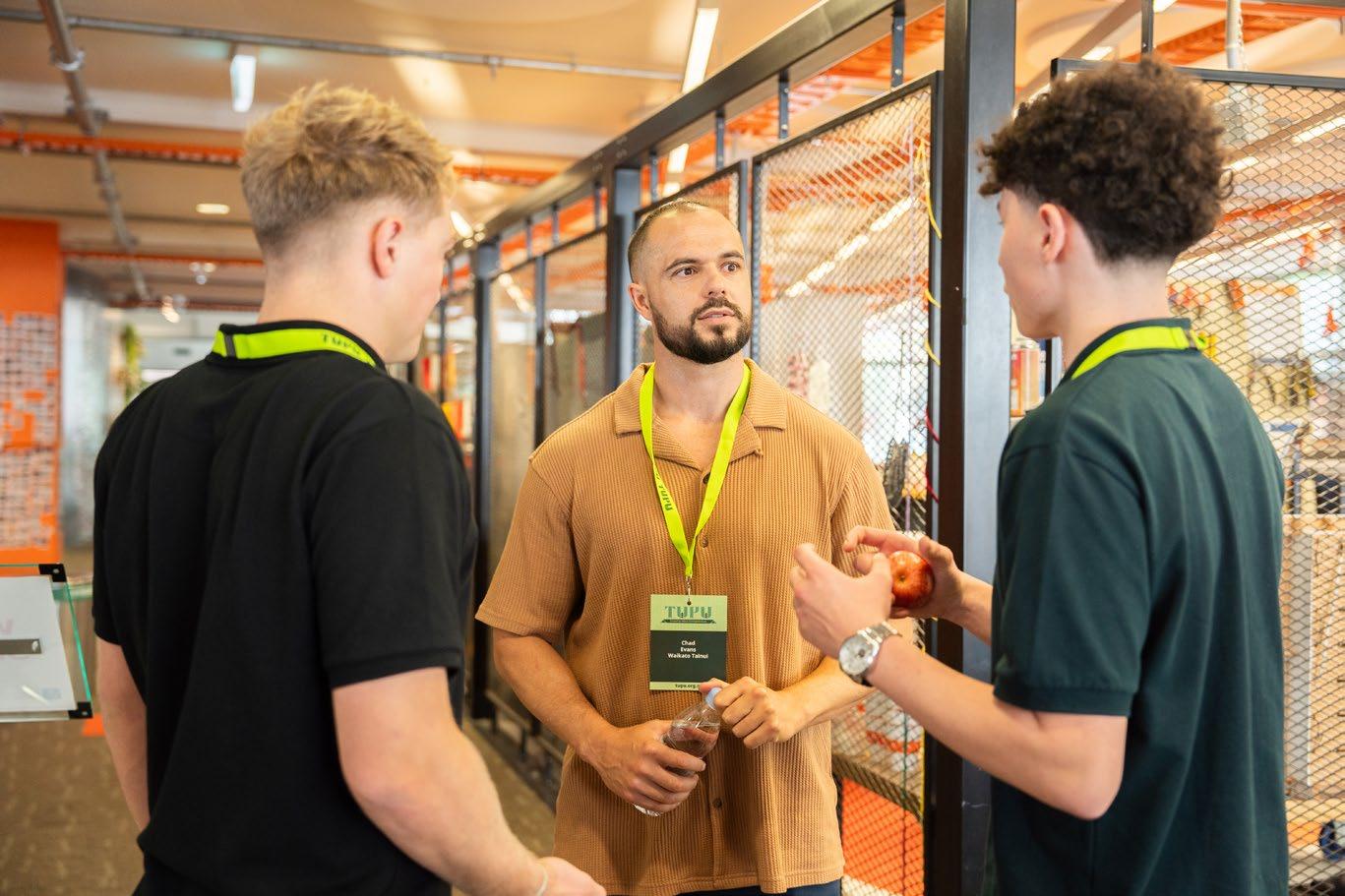







Te Ara Takatū: Pathways for Māori Entrepreneurship explores Aotearoa New Zealand’s venture capital ecosystem and provides supportive advice and insights to Rakahinonga Māori (Māori entrepreneurs) to become ‘investment ready’, navigate their own pathways, and become more successful in the early stages of startup growth. It is a joint research endeavour by Tapuwae Roa and PwC New Zealand, with support from New Zealand Trade & Enterprise.
Drawing from over thirty interviews across various stages of engagement with the venture capital landscape, the report presents insights and themes that capture a broad spectrum of experiences and perspectives. Interviews from Māori founders, ecosystem builders and venture capital investors, providing their experiences, knowledge and advice, have been distilled into a practical playbook for rakahinonga Māori who have created, or aspire to create, their own startup, and look to raise external capital to fuel its growth.
The report provides an introduction to the highly specialised language of startups and venture capital and contextualises the startup landscape to provide clear knowledge to navigate the journey ahead. It conveys the wisdom of both founder and investor perspectives, identifying key themes to deliver targeted advice on the drivers, assumptions and incentives that inform investment decisions. Finally, it explores broader market and systemic challenges facing rakahinonga Māori today.
Interviewees reinforced that no startup journey is the same. Founders can come from diverse backgrounds and experiences, and the various approaches, aspirations and ability to execute means that startups rarely follow a linear or prescriptive journey. They identified the key areas of focus to build a startup venture, including accessing mentors and advisors to support the journey ahead. Ka nui ōna piki, ōna heke, ōna piko, ōna ārai anōki – there are many peaks, troughs, and barriers along the way. Creating support mechanisms early, and knowing when to ask for help, is vital for your startup’s success and your personal wellbeing.
Investors encouraged founders to hold global aspirations for their startup from day one, reflecting that Aotearoa is too small by itself for venture capital, and to build a long-term vision early to reach that global market. The strength of rakahinonga Māori in storytelling is highly valued, and founders are encouraged to bring their whole selves into the kōrero, and it is imperative to communicate your strong commercial approach and the technical knowledge in your team.








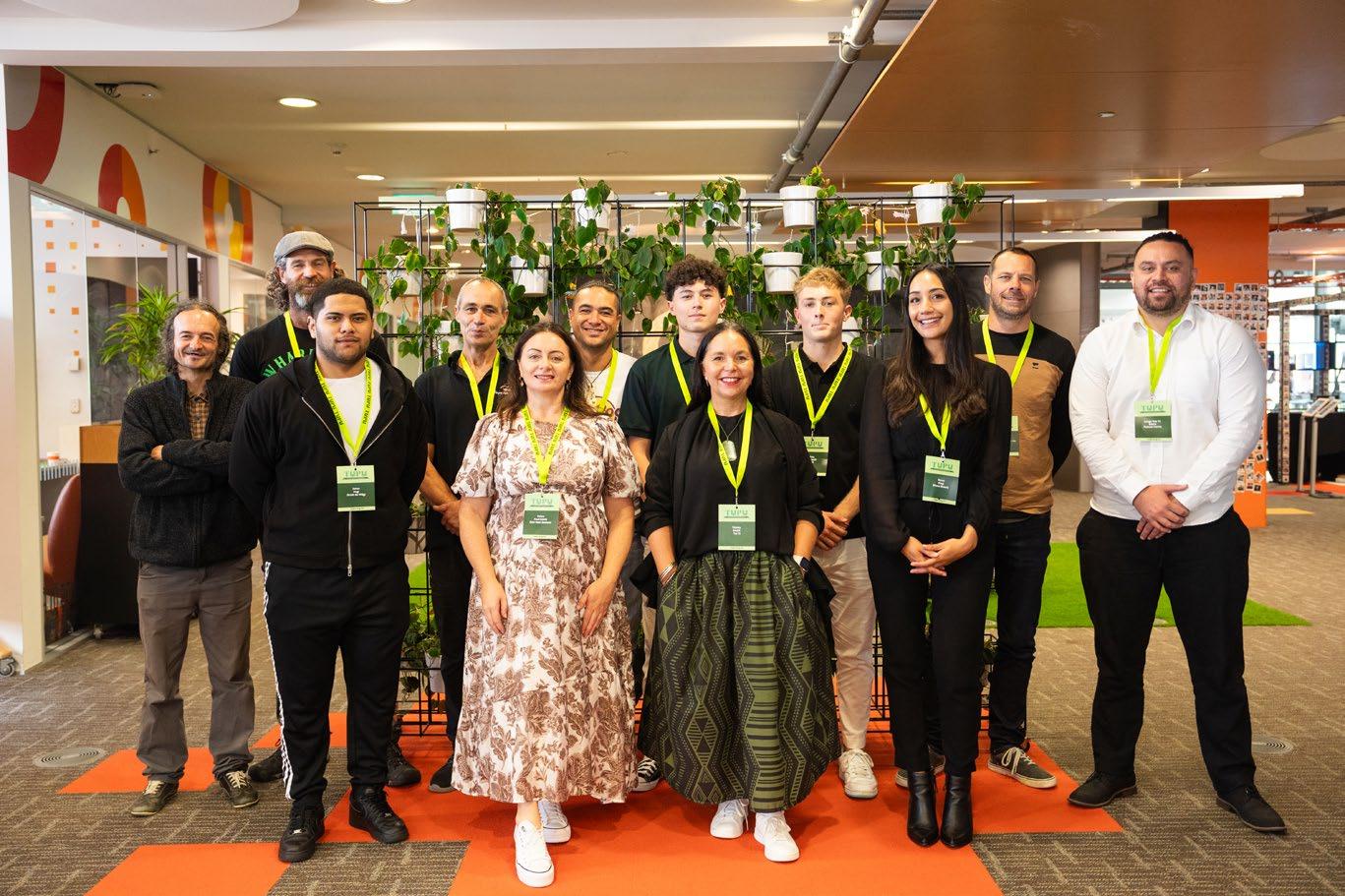
There are two systemic focuses that, if improved, could significantly support Māori access to early-stage investment capital in Aotearoa New Zealand:
1. Knowledge and education for Māori founders navigating the investment raising process to successfully meet the mandates of current investors.
This report provides some knowledge and education at a high level to help level the information playing field. However, Aotearoa must continue to actively grow and support business education initiatives; accelerators, bootcamps, incubators, and advisory services - designed by Māori, and delivered by Māori, for the growth of rakahinonga Māori.
2. Increasing capital available which is aligned with and supportive of rakahinonga Māori.
Increasing investment in minority founders is not just affirmative action; it is solving market inefficiency. The call to action is to diversify the Aotearoa New Zealand capital market to be in a proactive position to support the growth of rakahinonga Māori. That includes increasing the presence of Māori, and appropriately aligned investors, throughout the capital flows of the startup scene, including targeted venture capital funds and attracting aligned limited partners for investment.
Through synthesising the experiences of Māori founders and investors, this report not only offers a comprehensive overview of what makes an early-stage startup investable within Aotearoa New Zealand’s unique context, but also charts a clear pathway for rakahinonga Māori to thrive.





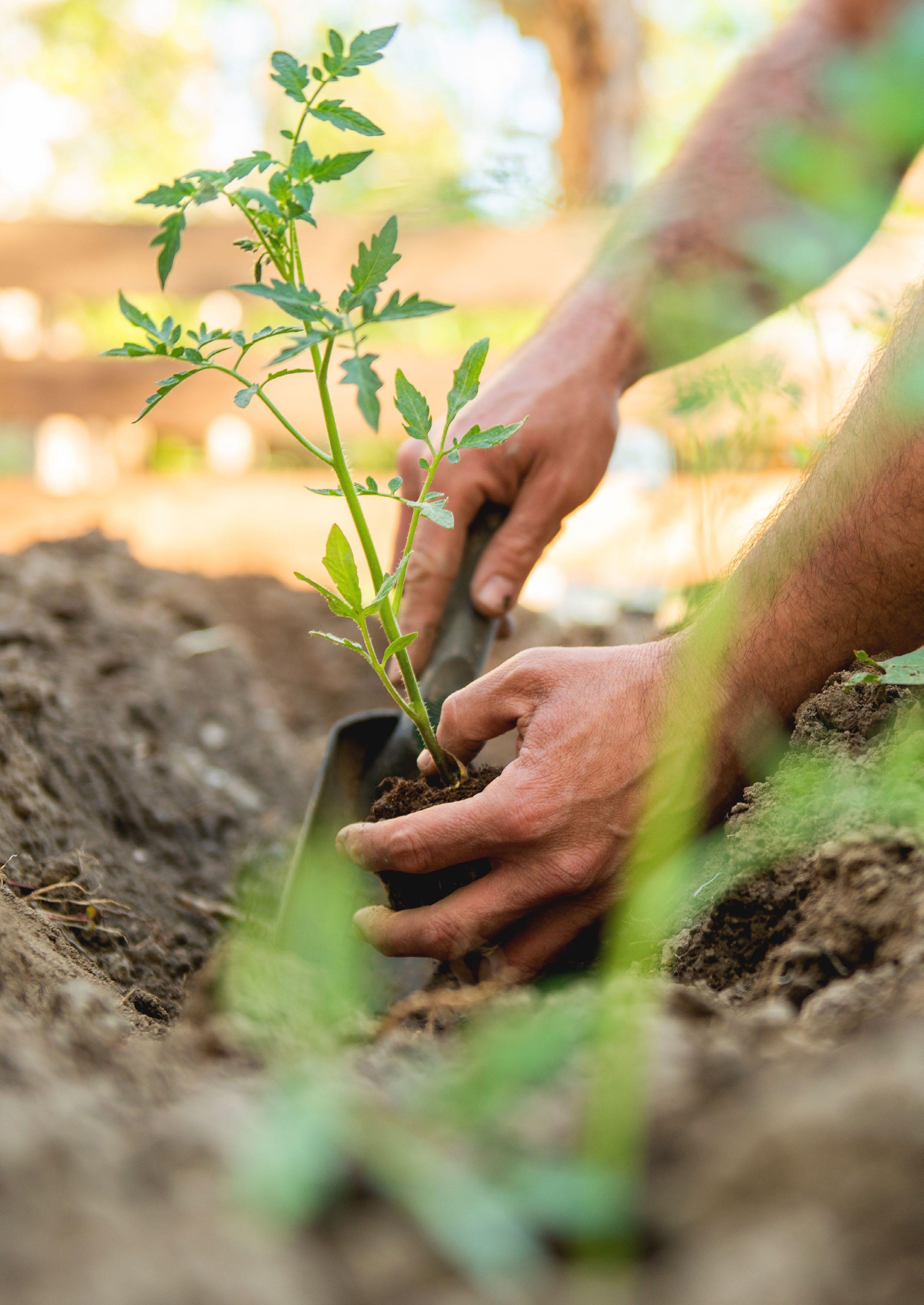











A quick Google search for the term "startup journey map" will yield thousands of descriptions and images of the stages a typical startup follows, often culminating in the conventional markers of success like an exit or IPO. However, these standard journey maps fall short when success is instead defined as sustained benefit for one's community and for future generations. This definition of success is one of the differentiators for rakahinonga Māori when compared to other startups, drawing from the engagement we had with Māori founders.
For this reason, we have created a new startup journey map for the purpose of sharing insights from our engagement with Māori founders and earlystage investors.
HE PURAPURA
A SEED
• Bootstrapped, formation stages of a business (founder-funded)
• Founder-operated part-time (side hustle)
• Pre-MVP
HE MĀTĀTUPU
THE FIRST SHOOT
• Pre-seed to seed
• Founder does it all
• Pre-revenue
• Focused on proving product-market fit
HE PIHINGA
A YOUNG PLANT
• Series A
• Team is growing
• Production needs to scale
• Early revenue and market traction
HE RAU KŪMARA READY FOR HARVEST
• Series B and beyond

• Scaling into global markets
• Profitable






Te Ara Takatū: Pathways for Māori
Thinking about the long term right from the start. The inclusion of the whetū provide a traditional context on the way our tūpuna used the whetū to navigate vast oceans to reach their destinations.
This component of the design highlights the power of networking and connection. By seeking advice and surrounding yourself around people that align themselves and support your kaupapa, then the stronger the connection.
Ensuring the environment in which the seedlings are planted within has the right nutrients in order for the kākano to grow its fruits.
NGĀ HUA | THE RESULT
Acknowledging of the hard mahi that is required to ensure the results are enjoyed and that through feeding the kākano, the kūmara can be used to invest in the future.







“E rua e rua te moni me te kūmara, kāhore he hua ōna i tua atu i te whāngai tāngata”
Money is like a kūmara; it has no value outside of its ability to sustain people.
The kūmara analogy speaks to our roots, and the values instilled in us by our tūpuna. The kūmara is a taonga brought from Hawaiki, a treasured food source that defines wealth from a tangata whenua perspective, that being the ability to feed and sustain your whānau, hapū, and iwi. This definition of wealth influences how some Māori organisations do business; this definition can also be considered a key driver of the Māori economy. This is the core theme of this report as we see the growth of rakahinonga Māori and the Māori economy as being synonymous to the growth of mahinga kūmara (kūmara cultivations) being a means to feed and sustain our people.
The purpose of this report is to support more Māori to be successful in the early stages of growing their startup, with a specific focus on supporting founders to becoming ‘investment ready’. Our report draws on conversations with rakahinonga Māori who have successfully navigated the investment journey. We also spoke to investors to understand what makes an early-stage startup investable within New Zealand's unique context. In all, this report is informed by over thirty interviews with founders, investors and ecosystem builders at differing stages of interaction with the venture capital landscape, to capture a diverse array of experiences and viewpoints to inform the future.
We learnt there are two overarching areas that, if improved, could significantly support Māori access to early-stage investment capital in New Zealand:
1. Knowledge and education for Māori founders navigating the investment raising process to successfully meet the mandates of current investors.
2. Increasing capital available which is aligned with and supportive of rakahinonga Māori.
With this in mind, we share advice tailored to the early growth phases of a startup; and insights that illuminate opportunities for the wider startup ecosystem.
A thriving startup ecosystem can stimulate economic growth. Startups can be catalysts for innovation, diversification, and revenue creation, bringing fresh ideas, new technologies, and innovative business models that enable all industries to adapt, improve and grow. There are approximately 546,000 small businesses in New Zealand, representing 97% of all firms. They account for 29.3% of employment, and contribute over a quarter of New Zealand’s gross domestic product (GDP) (MBIE - Stats NZ). However, although many startups fit the definition of a small business (less than 20 employees), not all small businesses are necessarily startups. A startup is not just a new business: it is a type of company with growth potential that exceeds the resources it controls.







As such, a startup will eventually need to seek external investment to meet these growth aspirations. This aspiration is what separates startups from enterprise, which can grow organically in a linear fashion.
The Startup Genome’s 2023 Global Startup Ecosystem Report 1 counted 2400+ startups in Aotearoa and noted that the density of the startup community exceeds that of many regional peers. According to PwC’s Startup Investment Report 2, there was $230m invested into New Zealand’s startup economy in 2022 alone. The growth of Aotearoa's startup ecosystem has been driven by the technology sector 3, with software as the most funded sector, receiving 45% of total funding, followed by deeptech (34% of total funding). Among Māori startup verticals, cleantech received the most funding (72%), followed by healthtech (13%) and space technology (12%). 4 Nonetheless, the Startup Advisory Council’s Upstart Nation report states that our ecosystem is under-serving rakahinonga Māori. The Council found:
• awareness of available support appeared low,
• startup programmes are not delivered in a way that provides an emotionally and intellectually safe place,
• access to capital is more challenging, and
• the level of ambition was generally considered by those consulted as lower than other parts of the ecosystem.
These findings are supported by insights from Startup Genome’s 2023 report, which also put Māori participation in the founder population at around 5%.

1. https://startupgenome.com/report/gser2023
2. https://www.pwc.co.nz/pdfs/2023/startup-may-2023.pdf
3. ibid


4. https://www.mbie.govt.nz/business-and-employment/economic-development/startupadvisors-council/upstart-nation/




The early-stage investment world is filled with jargon. It’s important to provide a glossary up front, not only to make sense of this report for the readers, but more importantly to make sense of investment conversations for founders.
A startup is an early-stage company created to develop a product, service or platform that addresses a perceived market demand. Startups look to grow and scale quickly to and often require external investment to do so. Startups operate in a fast-moving and highly uncertain environment.
The company starter/s. There can be one, two or multiple. Founders often have complimentary skillsets to bring the startup to life.
High-net-worth individuals who invest their wealth directly into startups.
Venture Capital Funds. VCs manage funds on behalf of others and invest in early-stage companies with international growth potential.
Limited Partners. LPs are the ones who put money into the funds managed by the VCs, and to whom the VCs are responsible.

The unique proposition of your startup.
The group (or groups) you are targeting to sell your product. Think globally from day one – Aotearoa isn’t a big enough market to sustain VC backed startups.
Total Addressable Market – the whole pie. If you gained 100% of the market, this would represent the total revenue opportunity. Think billions; not millions.
Serviceable Addressable Market – the wedge of the TAM pie that your company’s product or services can service. Again, think global, and think big, noting there will be competitors and substitutes fighting for the same SAM.
Your startups plan to take your product to the Serviceable Addressable Market. Includes marketing and sales channels. Successful startups are always market driven; identify a large, global SAM, intimately know their problem you are trying to solve, and develop the product to do that.





Achieving product-market fit is a big deal. It means your target customers see value in, and are purchasing, your product. This is one of the biggest signs for VCs to invest, but doesn’t come right away.
Minimum Viable Product. An MVP is that version of your product with just enough features to be usable by early customers, and for you to get feedback to continually develop it. It is not yet sellable.
Signalling to the VC community that your startup is ready for investment. Capital raise - are long processes that take months, and are not always successful. Getting investment is vital for startups to grow; more important is finding the right investor who fits with your company, values and vision.
How you ‘sell’ your investability. A pitch deck is a set of presentation slides that communicates the problem your solving, the unique value proposition of your product, the addressable market your targeting, the growth forecast and financials, similar companies you’ll have to compete with, and how your team is the right one to make this all happen. You will have to ‘pitch’ dozens of times to different VCs, so practice and nailing your pitch is paramount.
When VCs agree to invest, the exchange is money at a risky stage of your startup for a percentage of ownership of the company. How much equity VCs get is subject to a number of factors: the biggest drivers are the amount of the raise and the valuation of your company.
Capital table - of shareholders and their split of equity in the business.
When VCs want to invest, they will present you with a Term Sheet – a document containing the terms of an agreement or deal. This includes the amount of investment, the valuation of your company, who is investing (often a group of VCs, or a ‘syndicate’, with the one issuing the Term Sheet being the lead). It also includes key negotiating points that founders must get good advice on, such as how voting rights work, board composition and the rules around how the investor equity is treated in subsequent cap raises.


How much your company is worth at its current stage. VCs will use their expertise, deep sector knowledge, and market comparables in order to estimate your company’s market value. This is important, because the amount of equity they receive is the percentage of the valuation represented by their investment. As such, valuation is a point of strong negotiation between the founders and VCs.







As well as knowing the language, it’s also important to understand the growth curve of a startup.
The non-linear nature of a startup’s growth is what defines and differentiates it from any other business. The growth curve of a startup often represents the shape of a hockey stick, the bottom of the curve is referred to as the ‘valley of death’ by Geoffrey Moore in his classic book ‘Crossing the Chasm’. This is the stage often met by startups at the outset, where they are earning no or low revenue and have a short cash runway.
Pre-Seed Seed Capital Venture and Growth Capital Acquisitions/Mergers & Strategic Alliances
This report dives into the experiences of rakahinonga Māori who have navigated the ‘valley of death’, and what they learnt along the way. Our kōrero with these founders showed that the curve to success, and the definition of success can differ for some rakahinonga Māori when compared to other startups. Particularly for rakahinonga with more kaupapa-based business models, not primarily driven by profit but rather the impact that can be created for ngā iwi Māori. The end game for these businesses may not be a 10x exit, but rather a perpetual continuation of economic and social benefits across generations.
For this reason, we have created a startup journey map to categorise the stages of rakahinonga Māori aligned to the theme of the kūmara and it’s stages of growth.






HE PURAPURA A SEED
HE MĀTĀTUPU
THE FIRST SHOOT
HE PIHINGA A YOUNG PLANT
HE RAU KŪMARA GROWTH




• Bootstrapped, formation stages of a business (founder-funded)
• Founder-operated part-time (side hustle)
• Pre-MVP
• Pre-seed to seed capital ($100k-$900k)
• Founder-operated
• Pre-revenue
• Validating product and addressable market
• Developing go-to market strategy
• Series A ($1m-$10m)
• Team and resource needs to grow to realise business model scalability and repeatability
• Early revenue and market traction
• Series B and beyond ($10m+)
• Growth in global markets
• Recurring revenue growth, breaking into profitability
• Active employer




As a startup founder, you have the chance to turn your innovative ideas into reality, disrupt industries, and make a meaningful impact on society. The thrill of creating something new, the potential for significant growth, and the satisfaction of finding creative solutions make entrepreneurship both a challenging and rewarding career pathway. However, the startup journey can be unquestionably challenging. It comes with its fair share of obstacles that require determination to overcome. These challenges can include securing funding, finding product market fit, managing a team, and coping with uncertainty. This blend of opportunities and difficulties can be what keeps entrepreneurs driven and passionate about their path.
The ‘valley of death’ is a particularly difficult stage to raise capital because startups typically will not yet have a proven product or addressable market. This means founders are in the position of trying to sell part of their business to investors, a business with a product still being developed, an uncertain market, and a small team that is often stretched thin, with no or low revenue. Early-stage investment can come in the form of personal savings, cash injections from whānau and friends, debt or borrowing from financial institutions, government or philanthropic grants, or external equity-based investment from angel investors and/or Venture Capital funds. Seeking external funding from early-stage investors can be one of the biggest tests for founders. This critical stage marks the moment when startups must present to investors a compelling business proposition and the capability of achieving a return on investment that fits within their investment mandate and targets.
Navigating the deal interface requires a balance of confidence, strategy, and adaptability, as startups must present their ideas in a way that resonates with investors while remaining steadfast in their mission and vision. Startups who can successfully secure external funding often gain the necessary boost to bring their innovative concepts to life and pave the way for a promising future in the dynamic world of startups.
This report explores the experiences of Māori founders who have been successful in securing early-stage investment or who are considering this pathway soon. Specifically, we set out to:
• Dive deeper into the experiences of rakahinonga Māori that seek early-stage investment. We asked Māori founders what advice they would pass on to a close friend heading down this journey.
• Understand the views of early-stage investors when looking at opportunities presented to them - what are they looking for in founders, what do they need to support their investment pitch?
• Form insights about how the capital market serves rakahinonga Māori and explore whether there are opportunities to increase Māori representation within the startup ecosystem.
We hope the insights of this report will support Māori founders considering earlystage investment. Some of the advice shared may also be relevant for advisors and mentors, and incubators and accelerator programmes. We also hope to contribute further perspectives to the wider body of research focused on increasing Māori access to capital.






The research underpinning this report drew on semi-structured interviews as a method for gathering thematic insights. The approach involved engaging with participants in open-ended conversations, allowing them to express their thoughts, experiences, and perspectives in their own words. Unlike structured surveys or closed-ended questions, semi-structured interviews provide a deeper understanding of the subject matter by encouraging participants to share relevant information from their own worldviews.
The information obtained through our interviews was analysed thematically, identifying recurring patterns and insights that emerged from the participants' narratives. We selected this method so we could offer nuanced and holistic perspectives on this issue, making it particularly suitable for exploring diverse viewpoints, uncovering the key themes, and gaining a deeper understanding of rich human experiences.
Three groups of participants were identified as relevant for our research: Māori founders (n=14); early-stage investors (n=10); and industry leaders (n=4).
Participants were identified through our collective networks and approached to participate via direct contact and email.
As the interviews were being completed themes started to appear and are articulated later in the report. Due to the small sample size, insights are summative only (not representative) and names are withheld to protect the anonymity of participants.







A strong message emerging from the interviewee founders was how earlier access to vital knowledge about building their startups for investment would have changed their experience significantly. Many entrepreneurs expressed that they ventured into the capital raising process with limited knowledge of the factors of investment success. Investors equally expressed how first-time founders being educated in the investment 101s can really support the early investment conversations.
The investment process can be uncertain, unclear, non-linear, and variable for all founders. There is no clear path or roadmap. Support to navigate the pathway to investment can also be difficult to find. This report is a crowdsource of knowledge, advice, and experiences from investors and founders to help bridge this gap for existing and aspiring startups preparing for investment. This next section shares insights categorised as follows;
Kōrero from founder to founder
What advice would you give to your earlier self?
Kōrero from investor to founder
What are they looking for in a startup when they make investment decisions?




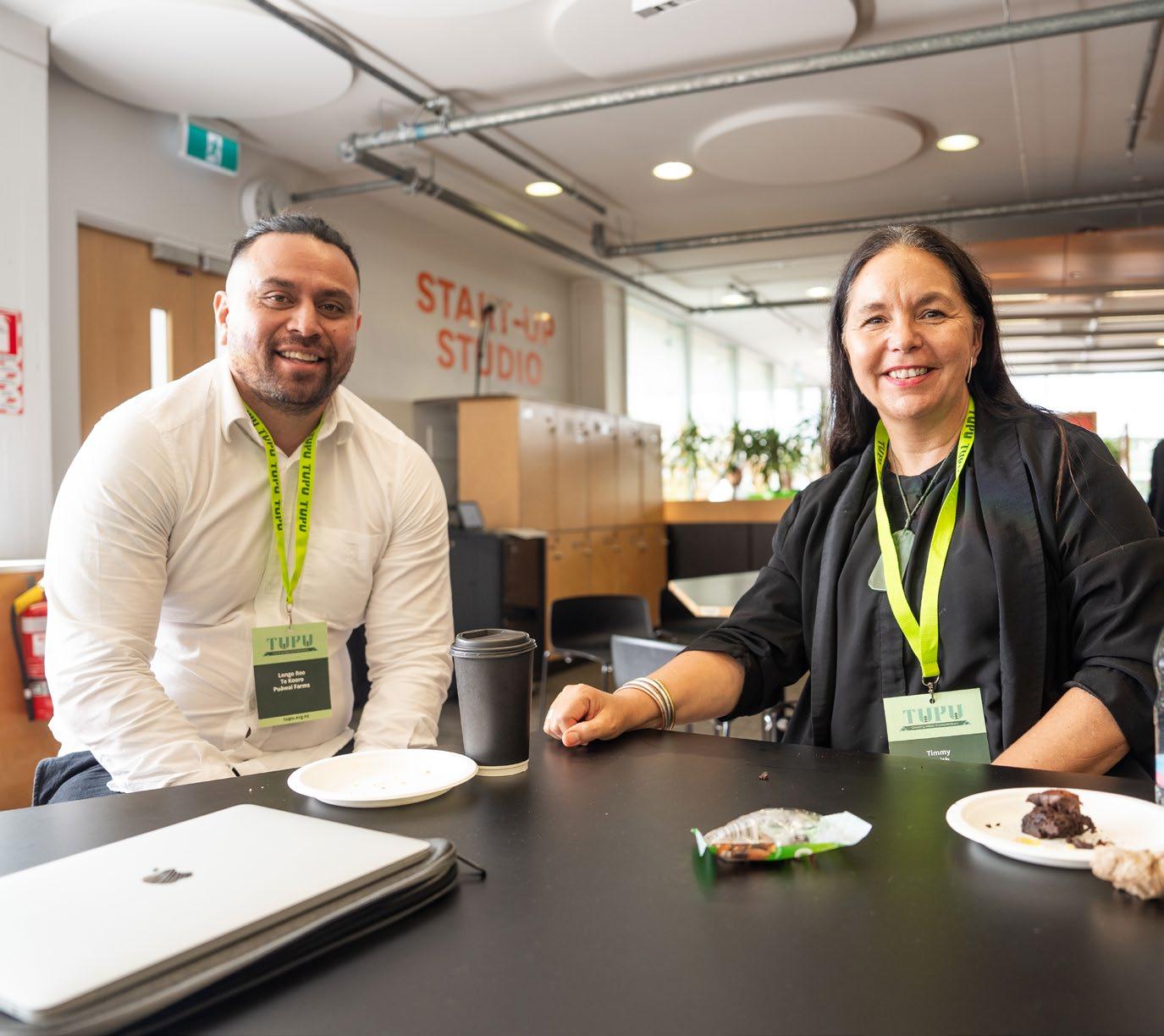








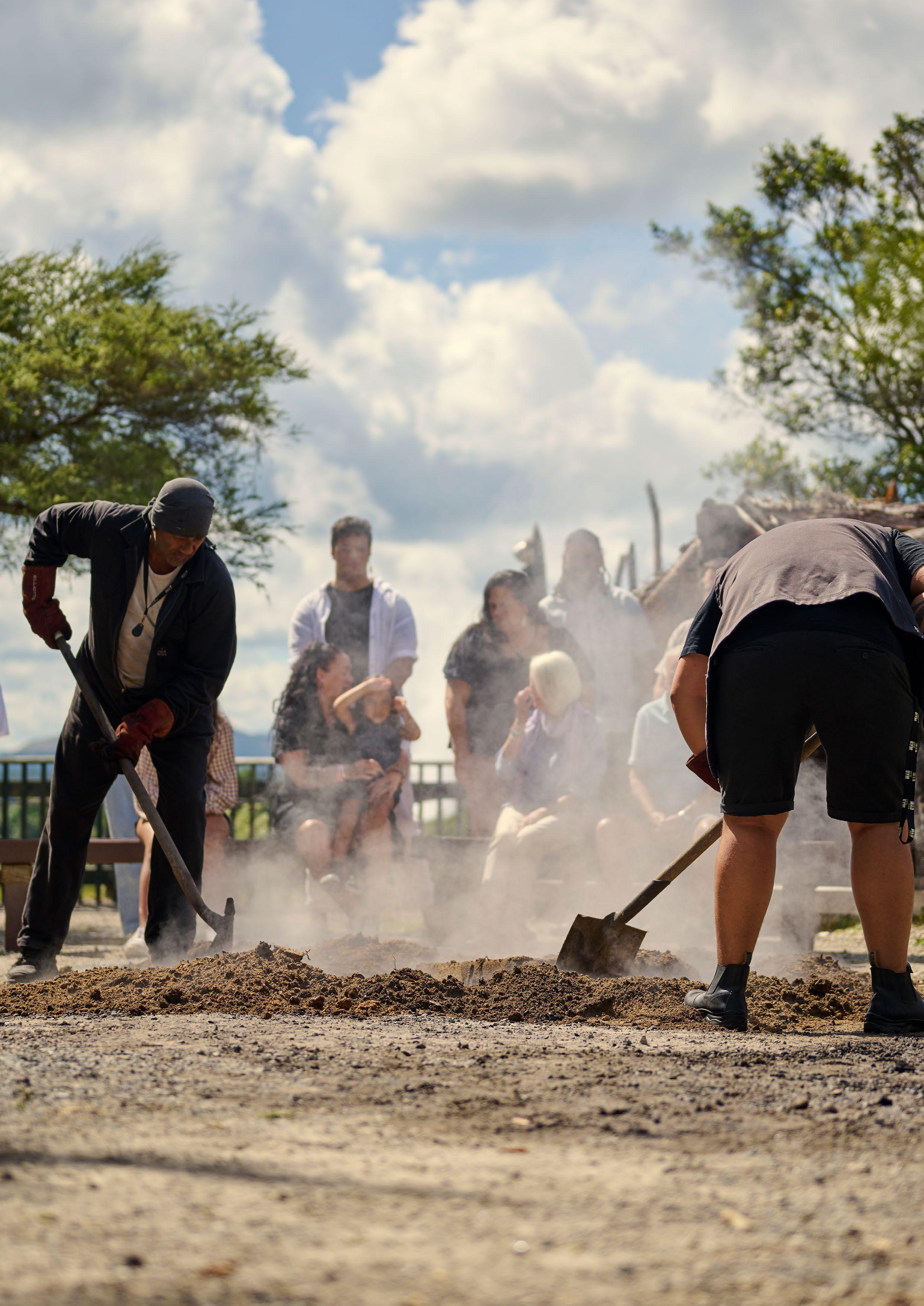



Some founders when asked to share their experience of raising investment, said it was like preparing for the dance of a lifetime. The preparation requires you to not only work on your own moves, but also to carefully choose your dance partner, to research the style of dance they like, what steps to follow, then ask yourself, can you complement and match this with your style?
This, in a nutshell, is what founders go through when preparing for investment.
Firstly, you need to know yourself
Are you ready for this? Are you prepared to take a countless rejections before you find the right lead investor?
You need to know your product and your market
What problem are you trying to solve? Is there potential for a 10x+ return on this product at international scale? Can you demonstrate product market fit?
And you need to know your investors
What is their investment mandate? What industries do they align with? Will my pitch match what they’re looking for? Do I need to build organically before I seek external investment?
This is also being aware and prepared of what you’re signing up for. It will be challenging, it will be stressful, the road is long and windy, and success is not guaranteed. Being a founder is a leap of faith.
It can take 12 months to get an idea together to a point where it can be presented to investors
You’ve got to do the work, there are no shortcuts
Early-stage investors look at the founder’s capability and motivations to execute just as much as they’re looking at the unique value proposition






It’s great to be resourceful and independent as a founder, but don’t let it become an anchor. There’s no shame in asking for help when you need it. Recognise that even the most successful entrepreneurs rely on a network of support.
This ‘go-it-alone’ mindset limits opportunities to learn and grow. Startup founders learn from mistakes – you can choose to make those mistakes yourself or learn from those made by others who share their experience and wisdom with you.
Come to terms early that you cannot build a successful startup on your own, and start building your support network from day one. The startup scene (particularly Māori founders) are often happy to share and support each other. Investors appreciate founders who are open about their challenges and actively seeking solutions and advice.
There’s a paradox in New Zealand of individualistic ideology of fixing the problem by yourself, so founders are bad at asking for help. Mostly due to being scared of blowing cover and admitting they don’t know everything
You learn a lot in the doing, but I think the idea of this is to not learn from your mistakes. It’s much better to learn from other people’s mistakes. That way you don’t make them


We have to shake off the whole number eight wire, ‘let’s do everything ourselves’ mentality, and saying ‘it’s all on me’. We need to be vulnerable enough to say, bro, there’s probably a whole bunch of things I don’t know here. Why don’t you tell me before I go and steer this into a ditch?
We try and do that sort of things as much as possible, tapping into as many switched on organisations that are willing to resource us without too much of a cost related







Get good commercial, governance, financial and legal advice.
Good advice is also imperative to the technical side of growing your startup. Many founders expressed that investing in good advice and engaging experts and advisors at the outset can prevent problems further downstream.
Whether its building your financial model to make a compelling pitch, or strong legal advice to help protect your intellectual property, great advice pays itself off in the long run. It not only helps you grow your startup strategically and efficiently, it makes it more attractive for investors.
My business partner and I agreed that we would always pay for the best advice we could get. While it costs a lot, it’s worth it in the end
Get a constitution and shareholders agreement in place early
It’s not having a strong enough governance team, that’s where a lot of founders fall down
Back when we were two guys sitting at a garden shed, as we said, Okay, who in this little country has actually done this before. And how do we tap their shoulder and get them involved?





Be strategic with your cap table.
Both founders and investors stressed the importance of protecting your cap table and the dangers of sharing it too wide, too early, with friends, whānau or for the opportunity to attend incubators and accelerators. If by the time you make it in front of VC investors only a fraction of the business is yours, it will be seen as a risk. Having the majority share means you retain control of the future of the startup.
Focus on building your business (building a bigger pie) before splitting it through external investment. If your startup is successful, there will come a point where your equity share will decrease as more and more investment is required. But it is better to have a small piece of a big pie than to have all of a small one. Giving away equity too early hinders your ability to raise capital later down the line.
They like cap tables where the founder has the majority share. Having the majority share means you have more decision making and can make faster decisions
A messy cap table can make it harder to get external investment
Protect as much equity as you can early on


If you’re going to go get funding you should have 60-70% equity of your company, if you don’t, you’re not as investment worthy
We didn’t want to take on investment at the wrong value, if you take out investment too early they buy out a large share of the company






A
kaupapa Māori value proposition can be attractive on the global scale.
A kaupapa Māori proposition leading your business can be seen as different here in Aotearoa to the general public and investor community. Overseas, being Māori, being from Aotearoa can be a source of attraction and differentiation for your startup. Things coming out of Aotearoa are held in a special light globally.
Although some investors in Aotearoa may struggle to see the value proposition that your startup has, overseas investors could appreciate and value the kaupapa Māori elements of it.
Communicating your unique value through storytelling is a way to stand out and capture attention, so don’t be afraid to bring your authentic Māori self in how you build and pitch your startup.
Customers around the world enjoy and appreciate and value our heritage We use our Māoritanga unashamedly
My view is that te ao Māori gives us an advantage over the rest of the world, if we use it
We work in a way where we build partnerships, globally people like that


The Americans love that connection back to Aotearoa and they love the elements of tikanga we have banked into our team culture. So, this is not something to shy away from. It’s something that we should lean into




Make sure you’re investment ready.
Investors are looking for specific traits in a startup that make it investment ready. Is their business model sound? Do they truly understand the problem they are trying to solve? How big is their target market? Are they masters of their technology? Have they shown product market fit? Do they have the right team to deliver their big goals?
Founders reinforced to strengthen your startup as much as you can before seeking capital. It puts you in a position of strength.
If you’re going to raise, it should be on the back of profitability, you should be able to tell a narrative where you can say: I’ve found profitability, I need help to scale
When we had product market fit, that’s when we were comfortable taking capital. Taking peoples money is a really big thing, you don’t want to take on people’s money and waste it away. You want to do something really meaningful with people’s money


The mana needs to be there before the finding investment
That was enough validation for us to say, I think we’re on to something
Getting them to think about the idea of: how can we do the market validation and minimise the risk... when you get in front of an investor, your commercials are better, and you can prove this is more than just an idea. You’ve validated their risks and addressed them.



Do what you can with no money



A trend in startups that succeeded and grew at pace was the unwavering confidence and drive of the founders selling themselves and constantly pushing their kaupapa.
The ability to hustle hard and find opportunities at speed is crucial to bringing your startup to life. Hearing “no” a lot is an unavoidable part of the hustlebe prepared for when it comes and don’t let it slow you down from getting to the next “yes”.
That level of urgency, audacity and swagger as the essential ingredients here
If you’re waiting around for the Crown you’re not really an entrepreneur



Hustling for sales, the kūmara has to speak about how good it is.
We’re New Zealand’s fastest funded startup full time. But much of that is because we were unreasonable in our expectations, and demanding of a level of attention that we did not deserve









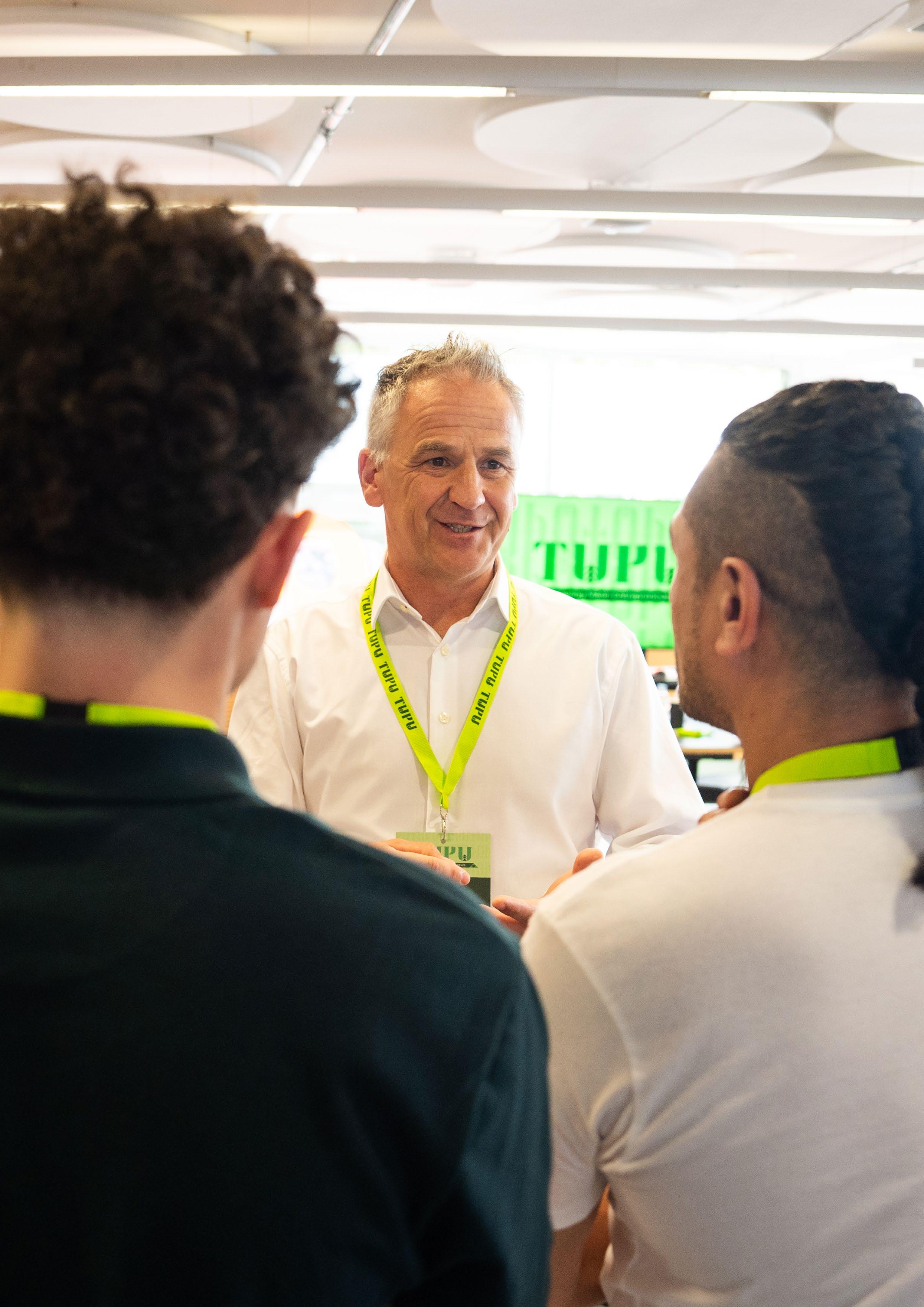




Are you solving a domestic problem or a global one?
VC funding opportunities are available to Māori startups, but they are driven by the quality of the idea, the product, the team, and global scalability. Investors prioritise startups with killer ideas, a strong business acumen, coachability, passion, focus, and the potential to scale with the guidance of knowledgeable mentors. Being Māori may help open the door to investor conversations but it’s the potential for a targeted returns that investors ultimately seek.
Investors need to see in their first interactions with you how your startup can scale to international markets. The honest truth is that only targeting New Zealand is too small, so start with global aspirations.
Bakeries are viable businesses; they just won’t be VC backable
You need to be shooting to the stars to get the economic returns that VC needs to be deployed
The internationalisation step, aspiring for a bigger market, then finding out more about that market, then actually being able to engage in that market is a pain point for all NZ startups




One
of the biggest issues for us is not thinking big enough.
Being global from the very beginning is essential for VC. NZ's domestic market isn't big enough


You have to be an expert in your technology and the problem or solution. That’s really the level where there could be an increase in capacity.
Be the expert: intimately know everything about your startup.
Investors don’t expect you to be an expert in how to build an Investment Memorandum or understand the inner workings of an investment term sheet, that can all be worked on by lawyers.
What they do expect is that you are an expert in your product. You know everything there is to know about it, all the limitations, the addressable market, the key competitors, future growth trends that could impact your product and more.
Before even thinking about investors, being an expert in your product can help you understand your unique value proposition. Knowing the competition and understanding the opportunities that emerging technologies bring means you are open to pivots that help provide you an even greater edge.
Then, once you’re in front of them, investors care about the founder and how capable you are, the same way they look at your product. If you can demonstrate these skills, they will value you higher. This goes both ways - as a founder, it is your opportunity to see if the investor is the right fit for your vision.
Being the expert on your startup means you can assess how good the fit is with a potential investor. You’re able to consider how they might help bridge gaps.
Understanding the state of the art, who else is in your cohort of companies, who is your competition, understanding your differences, understanding why your IP is unique, all that is much more important than the stage just before the deal.
You need to measure the problem before you can start doing anything about it





You’re the person investing first in this, you’re the one giving up time and livelihood. You need to know what’s in it for you from the outset and you need to be the expert on the opportunity



Think about the long term from the beginning.
Seeking VC investment is a huge undertaking. The responsibility on the investor’s shoulders from their supporters then the responsibility on yours as the founder once they invest in you and your startup is a serious thing, and not a practice exercise to see if the idea can work.
It can take a long time to prove that you’re investable and someone investors can trust. Years of planning and small strategic steps will show a trusted path of good leadership and product. Being investment worthy doesn’t come overnight or in six months, you must actively plan towards it from the beginning if that is something that you have your sights set on.
One thing we talk about with our founders is their capital planning for the long-term. There is never just going to be one round of capital raising. There will be multiple. So, think about how much of the company you're going to need as a founder or group of founders to be meaningful when you get to that larger stage of a US-based VC. They're not going to want to support you if you both only have 5% in the game.






Take the time to understand what your investor needs from you.
Both founders and investors explained that pitching is a small window into your world as a founder, make sure you tick off the investor’s big ticket items like your financial model and go to market strategy, then entice them to want to learn more.
Investors want to see evidence that a startup that can scale. Give them what they are looking for, and express your passion about the problem you are solving.
All investors use pattern recognition. There’s a pattern that needs to be present
The other would be sizing the market as an opportunity, TAM. The importance of that and a accurate measure is that it starts to talk to the type of investment is required


When you’re going to pitch, be as quintessentially you as you possibly can
The most important thing is to be aware of what the investors need to see to invest in you. Do your research on their fund, such as what they have invested in previously, and check your networks for who may have dealt with them. Being prepared and putting yourself in the investor’s decision-making shoes will go a long way. Its team, its technology and TAM (market). Essentially all investor evaluation falls into those three areas



Some investors prefer a startup with an A-rated product but a B-rated team, and some are the opposite. We prefer the former as founders can be developed but the product can be hard to change
Investors are either passive or active, most are passive and wait for the deals to come to them



Learn to speak the language of your investors.
Investors speak a certain language, if you want to be able to communicate with them and for them to understand what you’re trying to say, you need to learn it. You don’t need to be an expert, but you need to understand what they’re trying to ask in their questions and how to communicate effectively.
Not every investor will want this, some expressed there is a benefit to seeing a founder’s raw talent before they have gone through the pitch training. In the same light a pitch isn’t an interrogation, it is a two-way street. It is a time for you to understand the investor just as they are understanding you. Know what you want from a VC and see if they match it, not every VC and their money is best suited to you. You will have to pitch to many different investors, and get a lot of “no”s, before finding a match.
We [investors] slip into jargon really easily, we slip into a language that is fluent to us, and fluent to other people that we talk to in our world. It’s jargon, ideally what you’re wanting from a startup is for them to be aware of that, you don’t need to be an expert in it, but you have to be aware
If you’re a high aspiration startup that’s going to receive venture capital, the market has been homogenised internationally, you have to look and sound a certain part. It’s the speed at which the entrepreneur can get to that level
Putting a proper narrative around a company is a really hard thing to do, but it is super powerful


Practise, practise and practise some more. Make sure you have practised your pitch and pre thought about the questions investors might ask.




It is ok to fail.
A no from an investor isn’t a no forever, they have told us they would happily take another hire with a startup in three months if they can see growth and that the startup has taken their advice on board.
If things don’t go well, its not the end of the world. A failed startup is a failed idea, not a failed founder. Investors have explained that in Aotearoa we are quick to blame ourselves and doubt our ability if something goes wrong. If your first startup fails, it can be the best experience you could have to come back stronger.
If you want to succeed in the business world, you need to accept that although you pour your time and effort into a startup it still might crash and burn. It is an occupational hazard of an entrepreneur: accept it and move on to the next opportunity, instead of kicking yourself about it and never using your learning from the experience to set the next one up for better success.
There are some people that don’t pitch well, that doesn’t mean they can’t run a successful business
I think you’ll find 99% of VCs will happily take a second meeting if you can demonstrate progress


A bad pitch doesn’t mean a bad founder. It means for whatever reason; the founder didn’t have time to practice a pitch they can recite word for word
We [investors] like entrepreneurial repeat offenders, they already have scars, we don’t have to watch them make them



One thing American startup founders are seen to do well is, their startup might fail, but they’ll come back again. And could fail a second time, but they’ll come back again



Investors can add more value than just money.
The reason founders will pick an investor over other VCs is what value they bring outside of money. Having investors that can bring industry experience; can access external markets; can open doors to new connections and opportunities; can walk the talk having done it themselves.
Both investors and founders expressed that investors who can dedicate more of their energy to helping founders are the best investors. They also spoke to the immaturity of Aotearoa’s investor community: due to our size, investors are stretched over multiple verticals and quickly hit their ceiling of capacity.
Can we add some value to this, is this something that we know? You generally find that out in your due diligence process
Do we have experience in our network, is this a market we understand, has anyone in the team done something similar?
The best investors are the ones who are over themselves. When they haven’t got anything to prove to themselves anymore, they can be all about your success.






Bringing in a co-founder – build a team
Both investors and founders have expressed the importance of having a diverse and talented team, including your co-founders. It is always a good thing in the eyes of investors and the health of your startup going forward. Diversity in ethnicity, skillset, gender, background and even age are all good, but only if they complement each other.
Some founders may be skilled storytellers, communicators and problem solvers, their ideal co-founder may be someone with the technical, financial or legal skills to round out what their startup needs. If a founder can see they don’t have all the skills they need to make the startup successful, go find that talent. Add a technical co-founder, or a sales and marketing expert, to be in the best position to succeed.
A diverse team of talents with, say, a programming background, a legal background, someone who can sell a story and market the company and a commercial background will always look better than four people who can woo a crowd in a five minute pitch.
Investors want to see that you have all aspects of business covered. If you’re serious about getting VC investment, a step towards that is bringing other talented people
Having founders from different backgrounds enriches a deal
Why the partner is important is that at a certain point with you, to raise 30M you almost need to have 5-6 people that are better than you around you







Just as kūmara thrive in sun-drenched and nutrient rich soil, entrepreneurs too require a nurturing environment to flourish. In the quest to cultivate more successful Māori entrepreneurs in Aotearoa, it’s imperative that we create the ideal conditions for their growth and development. As well as sharing the valuable perspectives of our research participants, this section of the report introduces some of the broader issues that may present systemic barriers to accessing capital for rakahinonga Māori.
The absence of robust data on rakahinonga Māori makes it difficult to measure the current state of the Māori startup landscape. This lack of data not only limits our understanding of the experiences and challenges of Māori entrepreneurs, but it also impacts national policy and investment. This issue is not new, nor is it specific to Māori-led startups - the lack of an agreed definition of a Māori business and the impacts of this are well documented.






Without information such as the number, location, sector, stage of investment, deal size, and so on it is difficult to take stock of Rakahinonga Māori and to create targeted initiatives to directly support them. Furthermore, the absence of data raises questions about diversity, equity, and inclusion within the ecosystem, making it difficult to measure progress and promote equitable representation in entrepreneurship. Addressing this data gap, with multiple players participating, is crucial for fostering a more inclusive and dynamic entrepreneurial landscape in New Zealand.








The Startup Genome report - Assessing New Zealand’s Startup Ecosystem 5, suggests that an early success factor for founders is the local connectedness of the startup community. This was supported by the Mapping the Māori tech sector report 6, with founders saying innovation hubs and venture hubs are vital communities for building capability in the Māori startup ecosystem, places where businesses can come together to support each other’s growth and development by sharing knowledge and resources.
Eight interviewees expressed that the startup support system can be very fragmented and lack specificity to address their unique challenges. There are many ‘guides’ to starting and running a business, but often they can be too generic and based on theory as opposed to first-hand founder experience.Even though support is available, it may not always align with the needs of founders, leaving them feeling adrift in a sea of well-intentioned, but mismatched resources.
“Support does exist, but sometimes it’s not always matched up very efficiently. Sometimes we repeat the wrong sort of entrepreneurial programme, and we don’t get the best out of them.”
“Because I don’t know someone who knows someone that I could get a number off, I go through the 0800 number. Regardless of which government department you call, it’s a wall.”
These quotes emphasise the challenge of navigating a support system that lacks clarity and cohesion, leaving founders unsure about where to turn for the specific assistance they require. The need for more by Māori, for rakahinonga Māori solutions was supported by these same interviewees.
Māori participation in tech is industry is increasing, but still relatively low
The Māori Economy 2020 BERL (Business and Economic Research Limited) report7 reveals that Māori businesses are concentrated in specific sectors, with a significant presence in traditional industries. These sectors include agriculture, forestry, fishing, and manufacturing. Data sourced from New Zealand Trade and Enterprise (NZTE) between FY21 and FY23 shows tech is a strong sector for both Māori (34% of deals) and non Māori deals (60% of deals) facilitated by NZTE. However, Māori deals had higher total percentages in the Manufacturing and Food & Beverage sectors with 55% of total Māori deals8.
The overall lack of rakahinonga Māori in tech compared to these other industries may be a contributor to the low levels of VC investment in Māori startups, as VC is primarily driven by the tech industry. Part of this problem is the pipeline. The current pipeline of future rakahinonga Māori is rangatahi. Rangatahi are currently underrepresented in STEM education (2% according to NZQA) which eventuates to less Māori pushing into the tech industry and tech startup pipeline.
5. https://www.mbie.govt.nz/business-and-employment/economic-development/startup-advisors-council/ assessment-of-the-new-zealand-ecosystem/
6. https://www.mea.nz/mappingmaoritech
7. https://berl.co.nz/our-mahi/maori-economy-2020


8. 18% of total Māori deals were in the Food and Beverage sector, 4.5x higher than the 4% total deals completed in the Food and Beverage sector by non-Māori companies.





There is a body of research calling for the end of streaming in New Zealand schools. A series of reports9 by a consortium that includes Tokona te Raki and The Southern Initiative outlines how the education system has systematically streamed our tamariki and rangatahi away from STEM (Science, Technology, Engineering, and Mathematics) education. Early-stage investment is heavily weighted towards tech-enabled startups, and the impact of low STEM numbers amongst Māori has downstream impacts on the number of Māori-led tech businesses, which we are seeing today.
There are already solutions at play to fill the pipeline with rangatahi Māori. Ko Māui Hangarau10 and Pūhoro11 are two kaupapa dedicated to awakening, inspiring and igniting tamariki and rangatahi Māori into pathways in tech, science, innovation, and entrepreneurship. Delivered from outside the education system, there continues to be a need for education policy focused on addressing the inequity of access to pathways towards the destination framed by the dreams and aspirations of parents and whānau.
Five interviewees expressed that lack of visibility of successful Māori in tech adversely affects the future pipeline. The phrase “we can’t be it if we don’t see it” underscores the importance of increasing the representation of Māori in the technology sector and entrepreneurial community. The lack of visible Māori role models in the startup world can hinder the confidence and sense of belonging for new Māori founders wanting to enter in. Supporting the small number of Rakahinonga Māori that are already out there to raise investment and grow into successful ventures can create a snowball effect by inspiring more and more Māori to enter the industry.
Drawing on insights from the findings in Mapping the Māori Tech Sector12, it becomes evident that celebrating Māori founders is essential. Recognising their achievements, raising their profiles, and intentionally showcasing them on global stages can inspire the next generation of Māori entrepreneurs. Awards nights and recognition events like the inaugural Te Hāpori Matihiko Awards serve as platforms to highlight innovation and success. These events not only provide opportunities for networking but also shine a spotlight on the best and brightest in these sectors.

9. https://www.maorifutures.co.nz/projects/streaming/
10. https://www.kmh.nz/
11. https://www.puhoro.org.nz/



12. https://www.mea.nz/mappingmaoritech




Having capital available for Māori startups is one issue, those startups being ready to pursue that capital is another issue on its own, capability is equally important as capital. From the founder interviewees, a resounding kōrero was the steep learning curve experienced in becoming ‘investment ready’. From the investor interviewees, it was expressed that business fundamentals and 101s need to be nailed down before beginning kōrero with investors. Initiatives like Kōkiri have played a pivotal role in addressing this gap, as expressed by some of the interviewees who have come through this programme. Again, the notion of for Māori by Māori needs to be preserved in these early support solutions for Rakahinonga Māori, as supported by the interviewees.
Efforts should also be directed towards nurturing entrepreneurship in regional areas, beyond the major urban centres. Regional communities aim to develop their own support networks and initiatives, tailored to their specific needs and challenges.
A kaupapa-driven startup is the equivalent of an impact startup. Many rakahinonga Māori may place themselves in this definition. There is a capital gap for these types of businesses as many of them won’t be VC-backable as their market size and returns may not meet the benchmark, they also may not be eligible for commercial bank lending as their business models are far from traditional. This limits their investor set to; family and friends, impact investors, govt, philanthropics. These options all come with their own limitations which may mean an organic bootstrap approach is really the only way. To support this type of startup who may feel like they’re adrift in a capitalist ocean, we may need to consider the current makeup of NZ’s capital market and the gaps it has. Introducing funds with wider impact-driven investment mandates and balanced portfolios can assist in filling the gap. Another part of the solution is for current investors to widen their scope and allocate a portion of funds to smaller returns but bigger impact. Aiming for a 10x ROI from eight out of ten investments might mean for the remaining two investments, a 2x will suffice. However, strong social impact goals that are measurable are increasingly desirable. More funds like this contribute to an overall healthier economy.
“We accept that the typical upside is not there. As long as we can deliver ourselves some return, it still contributes to the fund, and we get social impact along the way.”
“We love what they’re doing, there is really good social impact outcomes, and we still think we can get a 2x on investment in New Zealand and Australia.”
“We can approach an opportunity or venture and say, “What’s the deal in terms of impact”? Then we can align the instrument and terms to that opportunity rather than saying “We are this type of fund, we invest in these kinds of things, you’ve got to fit within this box.”
This capital gap can stem from, as some founders expressed, the challenge of balancing profitability and purpose, as these two aspects can sometimes be in tension with each other. On one hand, startups need to generate revenue and achieve profitability to sustain and grow their business. On the other hand, many startups have a mission or purpose beyond profit, such as addressing social or environmental issues. Keeping this balance resonates with many rakahinonga Māori.







Purpose-led startups need to manage the trade-off between short-term profitability and long-term impact. This becomes increasingly challenging when engaging with investors. Startups seeking investment must find backers who align with their purpose and are willing to accept a longer timeline for returns. Considering alternative pathways to VC investment such as corporate partnerships might be a better option. Some corporations seek partnerships with entities that can help them deliver value aligned with their social goals, often through funding or other forms of collaboration. Pursuing different avenues can be equally valid and tailored to the specific goals of your business - particularly if maintaining control and ownership of your company or taking a slower, intergenerational approach to your success is important. In navigating these challenges, startups must carefully assess their unique circumstances, priorities, and values to strike the right balance between profitability and purpose, ultimately working toward their vision of success.
“I think we are playing a harder game, we need to recognise that and play that game, and play by our playbook. I don’t think there’s one written at present, so we often default to what’s visible.”
“It’s the profit versus purpose that you have to keep in check, if you go too far one way, you’ll bleed yourself dry with the other.”
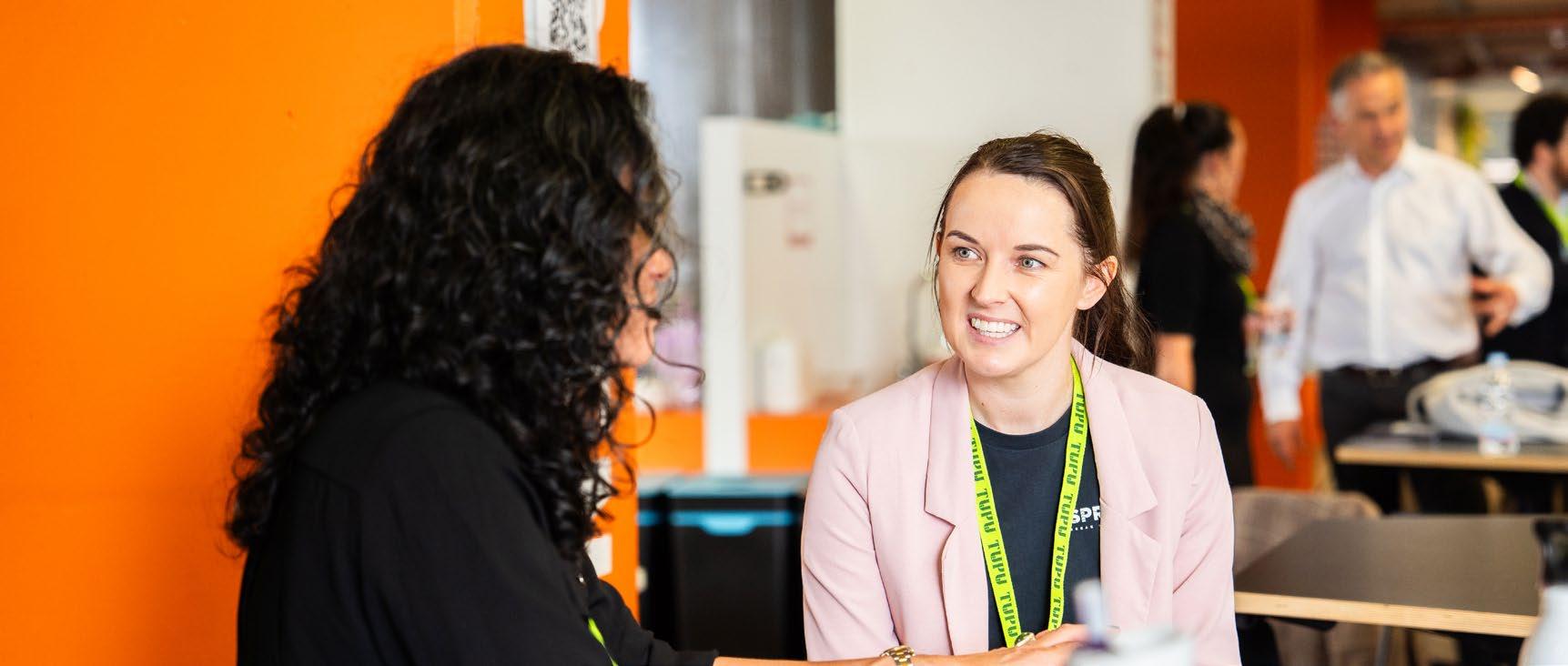
There is a strong desire from founders for investors who align on a values basis
We asked our interviewees whether they thought there was a values misalignment between investors and Māori founders - the most common answer was, potentially yes. Founders spoke about the importance of having investors and advisors who understand your focus; your passion; and your lived reality. Funding advisors that know what you are juggling such as whānau pressures; whānau and community commitments; and ‘non-standard milestones’, such as spending time with kaumātua to discuss intellectual protection (IP) strategies to protect mātauranga Māori (an example of this not being seen as a standard milestone surrounding IP in the convention startup sense).
Toi Hangarau - A report on Māori owned Technology Companies13, states that there is growth in the new investment models in Aotearoa including impact investment where an investor will forego immediate returns in anticipation of more substantial returns further down the track. In the report, Suse Reynolds from Angel Association NZ says that investors are looking for deep, sustainable, and genuine



13. Pāua Interface (2023). Toi Hangarau - A report on Māori owned Technology Companies, 2023, Auckland, Aotearoa




value. She talks about owning the value that Te Ao Māori brings. She contests the thinking that “goodness” and commercial opportunity need to be mutually exclusive.
Investors that focus on building relationships and who are prepared to focus on you as an individual - these are some of the new terms that founders want to negotiate. Are we not challenging ourselves to think more widely? Philanthropy and high net worth individuals that have made their money in the industry you are trying to disrupt - sometimes they are seeking their swan song and can be just as valuable to you.
“If you have to question how you address the investor you’re talking to, are they the right one for you?”
Government’s support to grow the startup ecosystem is not yet closing the equity gap for Māori
New Zealand’s startup ecosystem is experiencing growth in both size and quality - particularly in Auckland and increasingly in Wellington and Christchurch. This is partly attributable to government funding being injected into the early-stage capital markets through the New Zealand Growth Capital Partners’ (NZGCP) Elevate and Aspire funds. The Elevate fund has invested in top VC funds such as Movac, Blackbird, Hillfarrance, and Finistere Ventures. This has catalysed the growth of startups such as Vend, Rocket Lab, and Sharesies.
“I think the ecosystem is growing a lot, we’ve got some good funds around now.”
“I think with the growth of the ecosystem, we’re starting to see more and more quality programmes by both government and private groups that have mentors, that have actually had real feet on the ground, real experience in tech.”
However, government interventions aimed at supporting the growth of New Zealand’s startup ecosystem have fallen short when it comes to increasing Māori participation. While the country’s ecosystem has been growing and improving, there remain gaps in access to support, funding, and opportunities for Māori entrepreneurs. Initiatives designed to bridge these gaps, such as the promotion of careers in tech and micro business support, have yet to yield substantial results in terms of Māori engagement. Additionally, a lack of data collection and transparency in government-funded programs makes it challenging to measure their impact accurately.
Government is not the driver of market success, nor should we lean on them, however, their role is to intervene where there is a market failure. To address this particular market flaw, they need to better exert pressure and investment via a targeted strategy to grow Māori representation within the startup ecosystem.
“First time funds are going to be outsized in terms of risk.”
“I’m not sure if I see it more as a market failure or a policy failure, where you have an organisation and agency that’s mandated [to support Māori], but not given the right incentive structures or the right policy goals to make it happen.”
“How can the Crown fund a VC market, but put no requirement on them to fund Māori companies?”







Iwi commercial development entities are long established stakeholders in the traditional Treaty settlement sectors; fisheries, farming, forestry. Most are also growing as significant investors in real estate and private equity, as a means to diversify their commercial portfolios. Early-stage, venture capital investments, however, are yet to be really taken up by iwi as investors. This is a function of the unique iwi entity ownership structures detemining their risk appetite and investment approach. The typical Statement of Investment Policies and Objectives (SIPO) which sets the investment mandate of the iwi investor, usually positions the entity away from high risk, early-stage investments we would see in venture capital. This combined with a lack of in-house capacity to manage the investment directly, and the need to balance liquidity, often means that VC deals are often not viable direct investment options for iwi entities, despite being another option to further diversify an iwi asset base.
The current settings are not fit for high risk investments, but there are examples of iwi entities finding solutions to de-risk new investments and enable diversification. One example is partnering, certain iwi have taken equity positions in private investment banks, Ngāi Tahu & Greenmount Capital, Ngāti Toa & Armillary Capital. This same approach has also been taken by many iwi investing and becoming LPs in funds like Movac. Te Puia Tāpapa is a fund designed with a completely iwi LP base, and a kaupapafocused mandate, although not inclusive of VC. The obvious next step here is to establish a fund, or multiple funds, designed and led by Māori for Māori, to de-risk VC investment for iwi as LPs and in turn increase access to capital for rakahinonga Māori. The govt’s role in this equation is to enable these structures by co-investing, as they have with most other local VCs through NZGCP’s Elevate Fund.
“There’s a lot of people trying to bring iwi together to do this [educate them on the benefits of private investment]; but the left hand isn’t talking to the right hand.”
“The emergence of social impact investors has created an approachable framework for traditional investors, which now has the potential for stronger alignment with Māori investment.”










The insights captured in this report sought out to illuminate footprints or stepping stones to support rakahinonga Māori whose journey will take them towards VC investment. It also sought to highlight some of the issues within the current ecosystem that contribute to the current underrepresentation of Māori in New Zealand’s startup ecosystem. Addressing these will help create more opportunities for Māori to build and grow successful businesses in our current ecosystem. But this should not stop us exploring what a Māori-led startup economy and ecosystem could look like. One that contributes to an Aotearoa where all people benefit from our collective success.
New Zealand’s startup ecosystem already possesses distinct ingredients that sets it apart on the global stage. The primary industries sector provides a test bed for disruptive agritech products and our clean and green image appeals to global consumers and investors seeking eco-friendly products and services. Incorporating Māori values, perspectives, and mātauranga (knowledge systems) into business and innovation attracts interest from culturally diverse markets.
There is an opportunity to craft our own measures of success that align with our unique values and strengths. In New Zealand, success of our startup economy might be better measured by factors like sustainability, social impact, indigenous representation, and community resilience. These metrics could help drive business activity that contributes to regional development, upholds Māori values, and fosters a sense of community cohesion. By redefining our own measures of success, and defining the role business could play in this, we can foster an environment that truly reflects our diverse and innovative identity.
“It all comes down to the definition of success. My hypothesis is that Māori may have a slightly different definition of success to the western definition. It’s focused on a collective, intergenerational and empowerment one.”





The current mix of available VC funds have the potential to further exacerbate disparities in our country. We need to ask the question as to whether we are prepared to concentrate more effort towards developing investment approaches that align with local values building on our own unique ingredients. The landscape is already shifting with impact investing, iwi investment, corporate partnerships, and social entrepreneurship all growing. But New Zealand’s start-up ecosystem needs more Māori-led and kaupapa-driven capital. Supporting the growth of Māori capital flow is a gradual process that will require a collective effort. It’s important to emphasise the potential for financial returns and positive societal impact that can result from diversification of New Zealand’s capital market. By building a strong case and engaging with key stakeholders, it’s possible to drive meaningful change in the VC industry.








Many of the issues highlighted in this report are not quick fixes and require a long-term focus; a bold vision for the future; realistic expectations about the time it takes to achieve this; and many players to work together. Any interventions need to be designed with Māori founders.
The time of harvesting kūmara traditionally symbolises a time when families and communities come together to strengthen the bonds that connect them. The feast that follows is the culmination of the collective efforts to nurture and tend to the crop. It is a time of storytelling, laughter, and the reaffirmation of traditions, reminding everyone of the importance of togetherness and the simple joys that harvest season brings.
Nurturing a thriving startup ecosystem also involves a sense of community and celebration. In a thriving and collaborative ecosystem, entrepreneurs, investors, mentors, and supporters will come together to plant the seeds of innovation and nurture the growth of new businesses. Just as people gather to share in the feast of kūmara, the success of startups will be celebrated and shared collectively.
“E rua e rua te moni me te kumara, kāhore he hua ōna i tua atu i te whāngai tangata”
Money is like a kūmara; it has no value outside of its ability to sustain people.









1. Startup Genome (2022) ‘Assessing New Zealand’s Capital Ecosystem’; https://www.mbie.govt.nz/dmsdocument/26386-assessing-new-zealandsstartup-ecosystem
2. PriceWaterhouseCoopers (2023) ‘Startup Investment’; https://www.pwc.co.nz/ pdfs/2023/startup-may-2023.pdf
3. Startup Genome (2022) ‘Assessing New Zealand’s Capital Ecosystem’; https://www.mbie.govt.nz/dmsdocument/26386-assessing-new-zealandsstartup-ecosystem
4. Ministry of Business, Innovation & Employment (2023) ‘Upstart Nation’; https://www.mbie.govt.nz/business-and-employment/economic- development/ startup-advisors-council/upstart-nation/
5. Startup Genome (2022) ‘Assessing New Zealand’s Capital Ecosystem’; https://www.mbie.govt.nz/dmsdocument/26386-assessing-new-zealandsstartup-ecosystem
6. MEA (2023) ‘Mapping the Māori Tech Sector’; https://www.mea.nz/ mappingmaoritech
7. BERL (2020) ‘Māori Economy 2020’; https://berl.co.nz/our-mahi/maorieconomy-2020
8. New Zealand Trade and Enterprise, private source.
9. Tokona Te Raki ‘Kōkirihia’; https://www.maorifutures.co.nz/projects/streaming/
10. Ko Māui Hangarau, website; https://www.kmh.nz/
11. Pūhoro, website; https://www.puhoro.org.nz/
12. MEA (2023) ‘Mapping the Māori Tech Sector’; https://www.mea.nz/ mappingmaoritech
13. Pāua Interface (2023) ‘Toi Hangarau- A report on Māori owned Technology Companies’; https://www.toihangarau.nz/
































